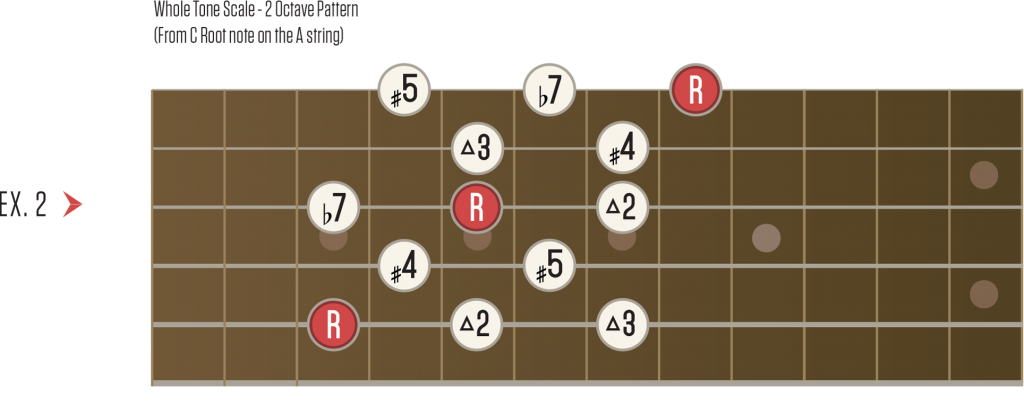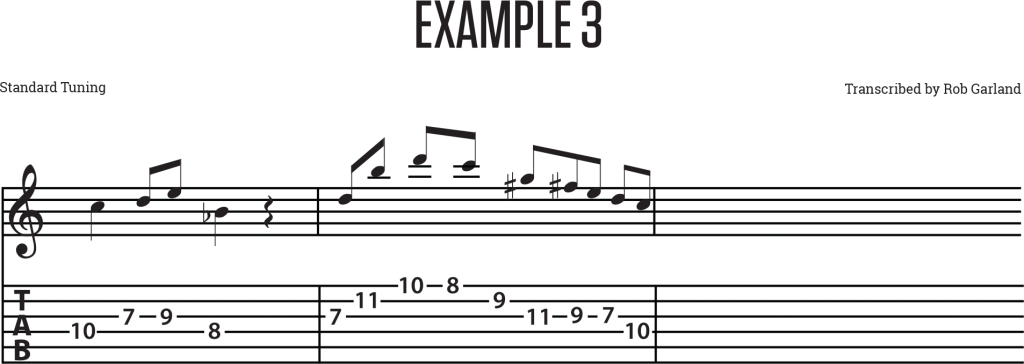Overlooked and cast out into the wilderness for its perceived weirdness is my friend, the Whole Tone scale. It shows up in classical works by the likes of Debussy and Stravinsky, jazz compositions by Wayne Shorter and John Coltrane, is sprinkled throughout the back catalog of Frank Zappa and even rears its head in pop music such as at the beginning of Stevie Wonder’s “You Are The Sunshine Of My Life.”
Comprised of six notes per octave, a whole tone apart (aha, so that’s where the name comes from!) any one note can be the root. Because it’s a symmetrical scale you can move your favorite licks up or down by a whole step. Surely not? Yes, but don’t call me Shirley.


Examples 1 and 2 show several two-octave fingerings for the scale, but there are many possibilities so I suggest you experiment and find patterns that work best for you.
So now we know the scale, let’s look at a real-life musical application utilizing it over dominant chords. Try playing the whole tone scale from the root note of the chord and you’ll hear Root-2nd/9th-3rd-b5th-#5th-b7th, which yields some hip altered tones to wreak havoc with.
Listen to Audio Clip 1

Example 3 shows a wonderfully strange lick based out of the C whole tone scale played against a C7 rock vamp and provides a nice unexpected alternative to the often over-used blues lick.
Listen to Audio Clip 2
Playing the full scale can be rather tense at times, as you’ve probably noticed by now, so experiment combining fragments of it with dominant arpeggios, the mixolydian mode and your favorite pentatonic licks. This way you’ll breathe new life into your playing, yet still create enough dissonance to annoy your neighbors.


